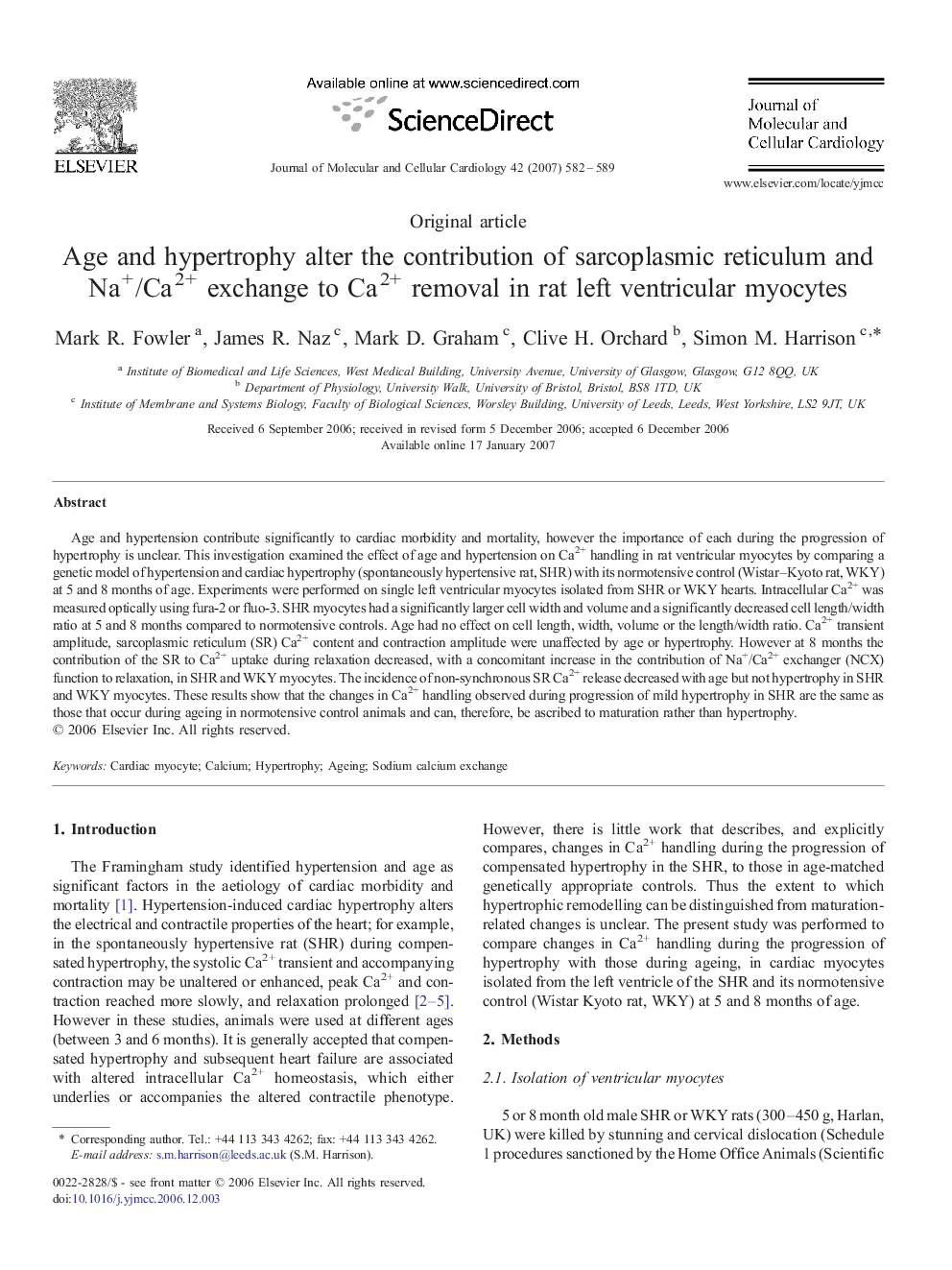| Article ID | Journal | Published Year | Pages | File Type |
|---|---|---|---|---|
| 2192129 | Journal of Molecular and Cellular Cardiology | 2007 | 8 Pages |
Age and hypertension contribute significantly to cardiac morbidity and mortality, however the importance of each during the progression of hypertrophy is unclear. This investigation examined the effect of age and hypertension on Ca2+ handling in rat ventricular myocytes by comparing a genetic model of hypertension and cardiac hypertrophy (spontaneously hypertensive rat, SHR) with its normotensive control (Wistar–Kyoto rat, WKY) at 5 and 8 months of age. Experiments were performed on single left ventricular myocytes isolated from SHR or WKY hearts. Intracellular Ca2+ was measured optically using fura-2 or fluo-3. SHR myocytes had a significantly larger cell width and volume and a significantly decreased cell length/width ratio at 5 and 8 months compared to normotensive controls. Age had no effect on cell length, width, volume or the length/width ratio. Ca2+ transient amplitude, sarcoplasmic reticulum (SR) Ca2+ content and contraction amplitude were unaffected by age or hypertrophy. However at 8 months the contribution of the SR to Ca2+ uptake during relaxation decreased, with a concomitant increase in the contribution of Na+/Ca2+ exchanger (NCX) function to relaxation, in SHR and WKY myocytes. The incidence of non-synchronous SR Ca2+ release decreased with age but not hypertrophy in SHR and WKY myocytes. These results show that the changes in Ca2+ handling observed during progression of mild hypertrophy in SHR are the same as those that occur during ageing in normotensive control animals and can, therefore, be ascribed to maturation rather than hypertrophy.
